untitled (3640 mm)
untitled (3640 mm) / Vibrant Waters
Water and light are not only the basis of all life on earth, they are also indispensa-ble to the human perceptual apparatus and form the material foundations of photography. To make the role of the two elements in the imaging process visible, the artist Olga Holzschuh works with cyanotype: iron and salt-containing powders are mixed with water to form a light-sensitive emulsion.
For the work o. T. ( 3640 mm ) Holzschuh applied the cyanotype to three glass plates. The dimensions correspond to the size of the ceiling windows of Temporary Gallery. The water for the solution was taken from the Rhine and was used unfil-tered. River water and light incidence allow for an indexical tracing that intertwines two places and ecosystems.
Both the water of the river and the incidence of light in the room carry site-spe-cific information. H2O occurs outside the lab only in conjunction with other constit-uents that reveal something about the history and current state of the body of water. In parallel, the architecture and the presence of bodies in the space deter-mine the way in which light is reflected, refracted or absorbed in contact with matter. As the moisture slowly escapes from the emulsion, this information in-scribes itself into the image carrier. The artist deliberately omits the final step of fixing the motifs. The process is finished as soon as the surface dries out and becomes porous.
The cyanotypes created in the exhibition space can be seen as a poetic commentary on the fragility and ephemerality of spatiotemporal constellations, which also include (eco)systems. Against the backdrop of the exhibition’s themat-ic setting, Olga Holzschuh’s work takes on a darker note: what is at stake when water retreats from the landscape?
Nada Rosa Schroer
untitled (3640 mm)
Glass, aluminum, water, potassium hexacyanidoferrate, ammonium iron citrate
142 x 172 cm, 3-piece, 2023

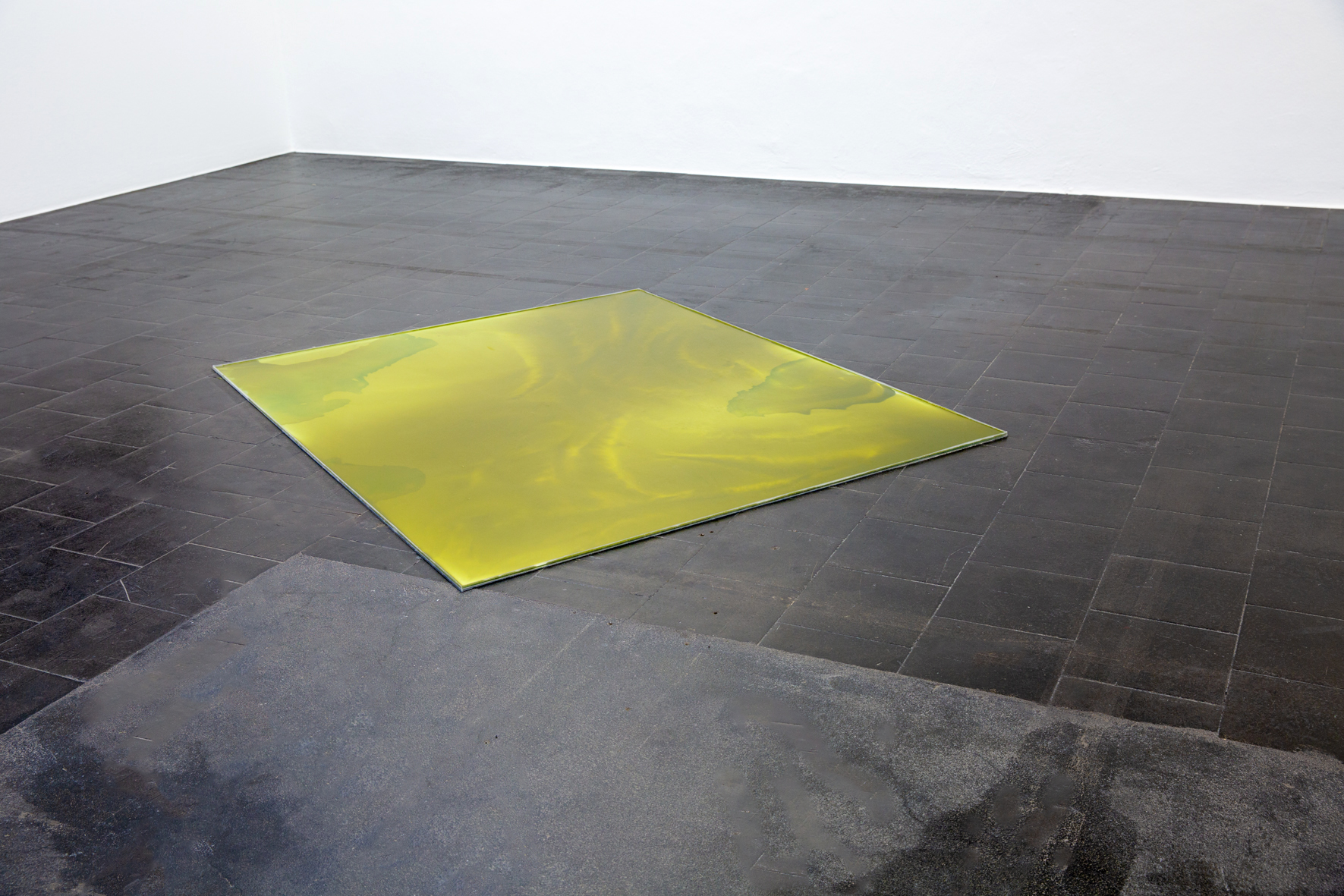
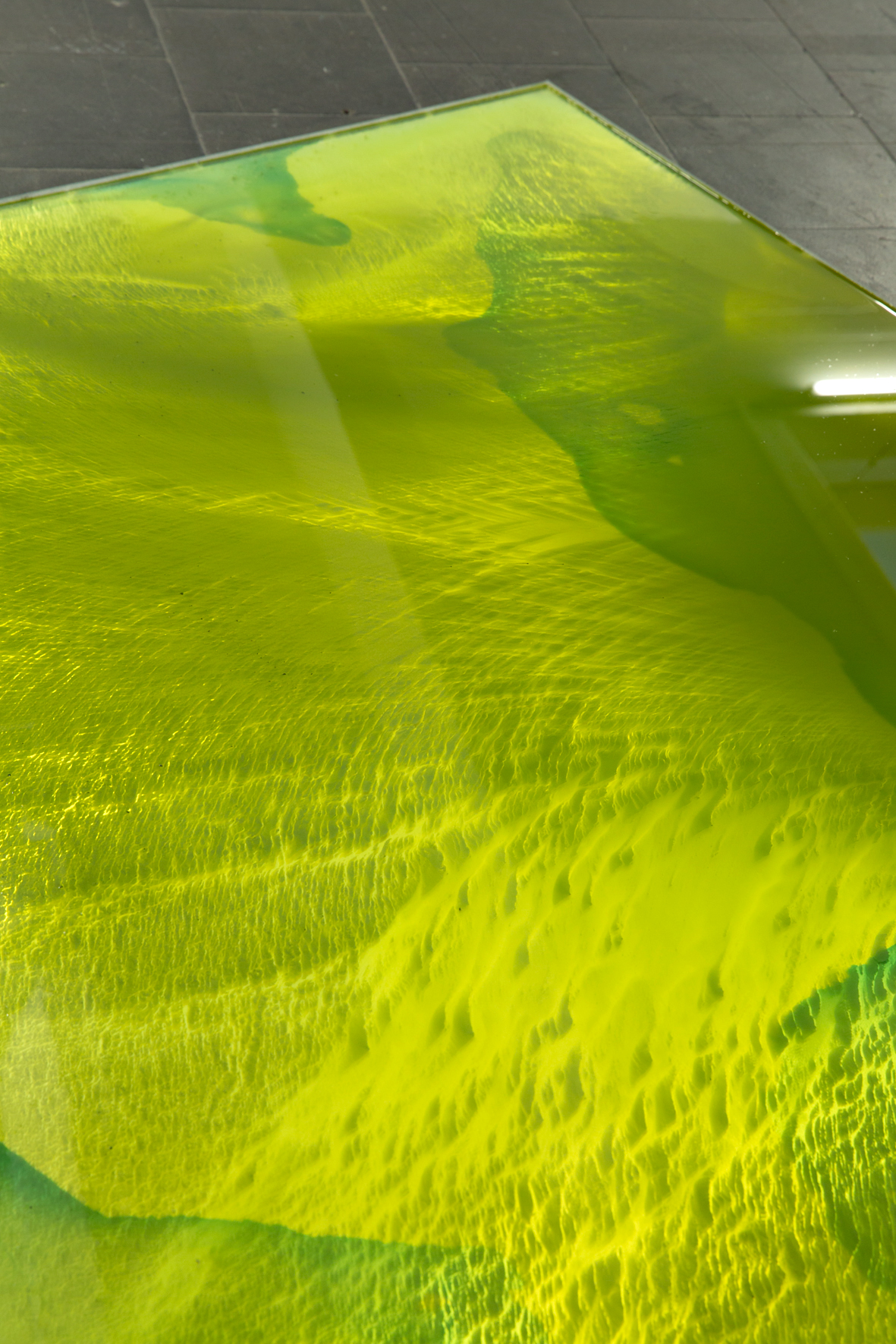


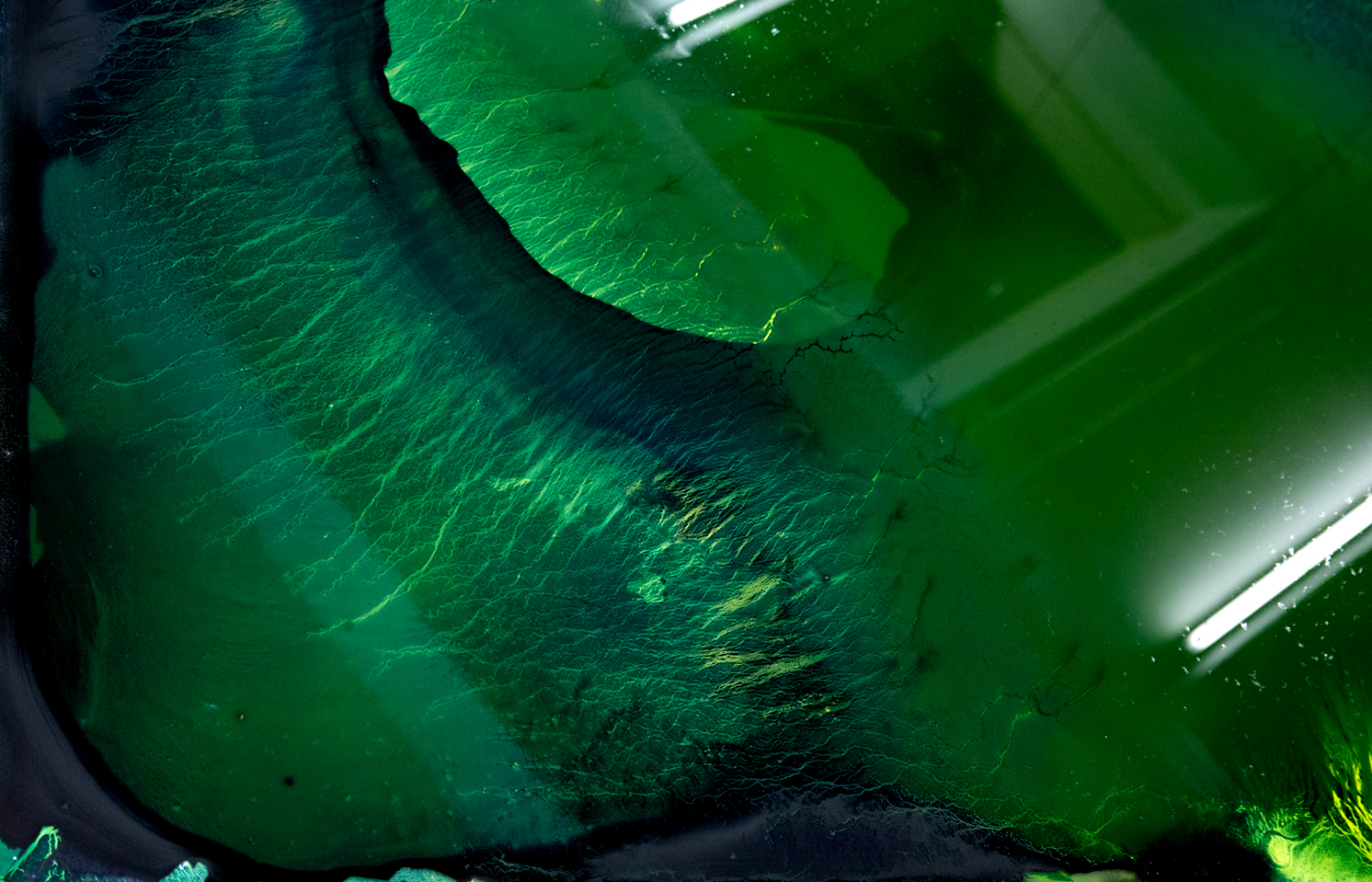
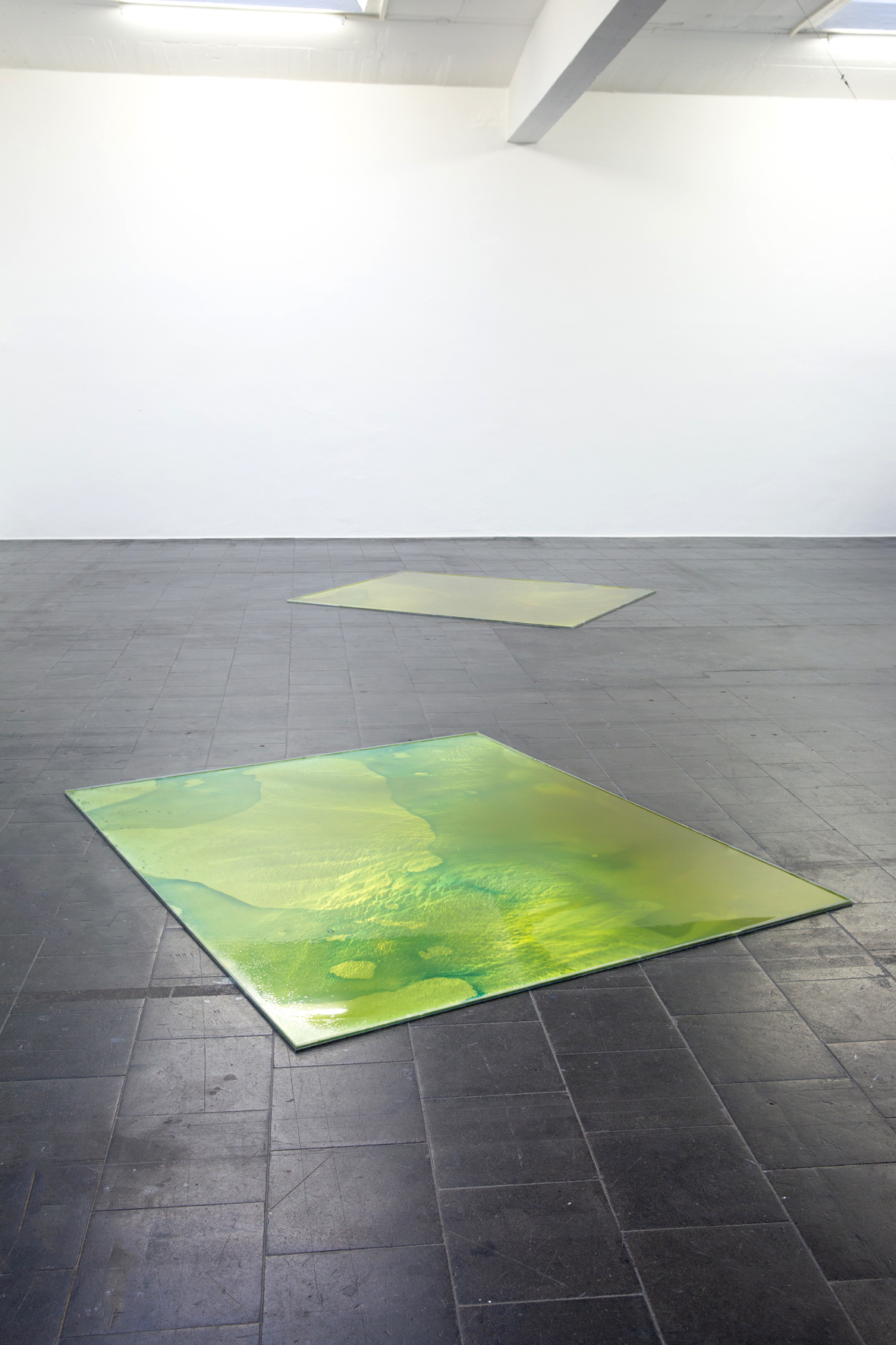
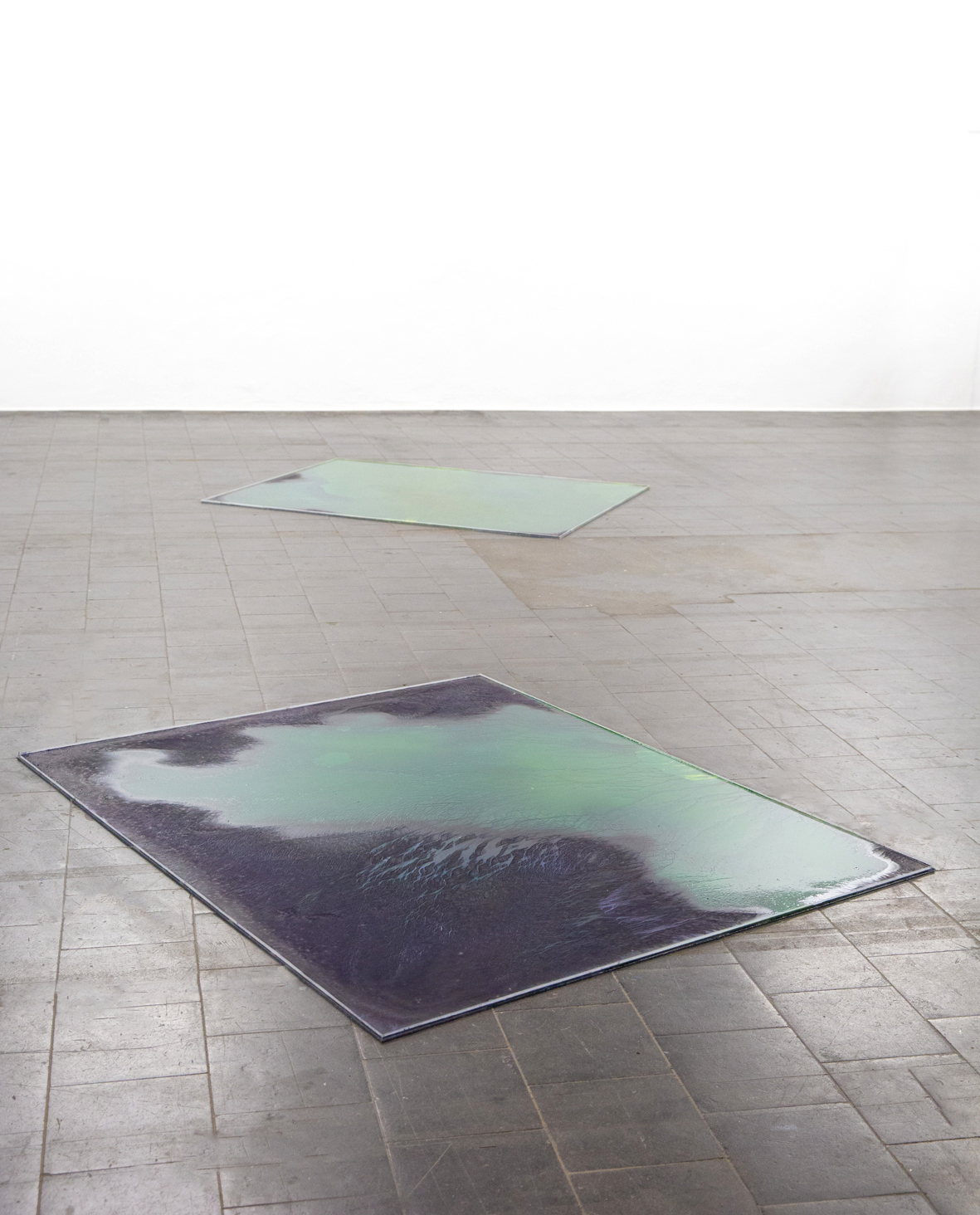

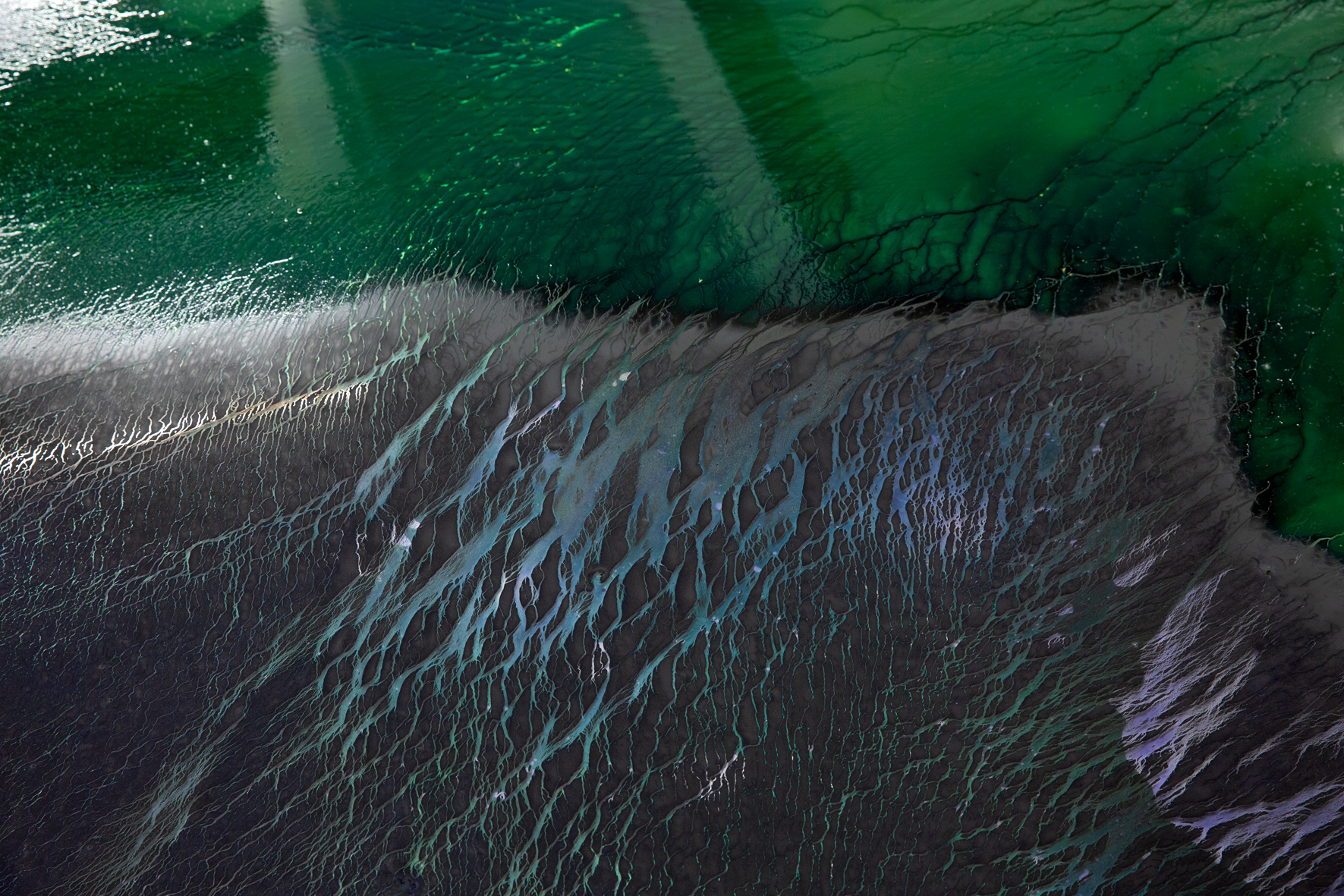
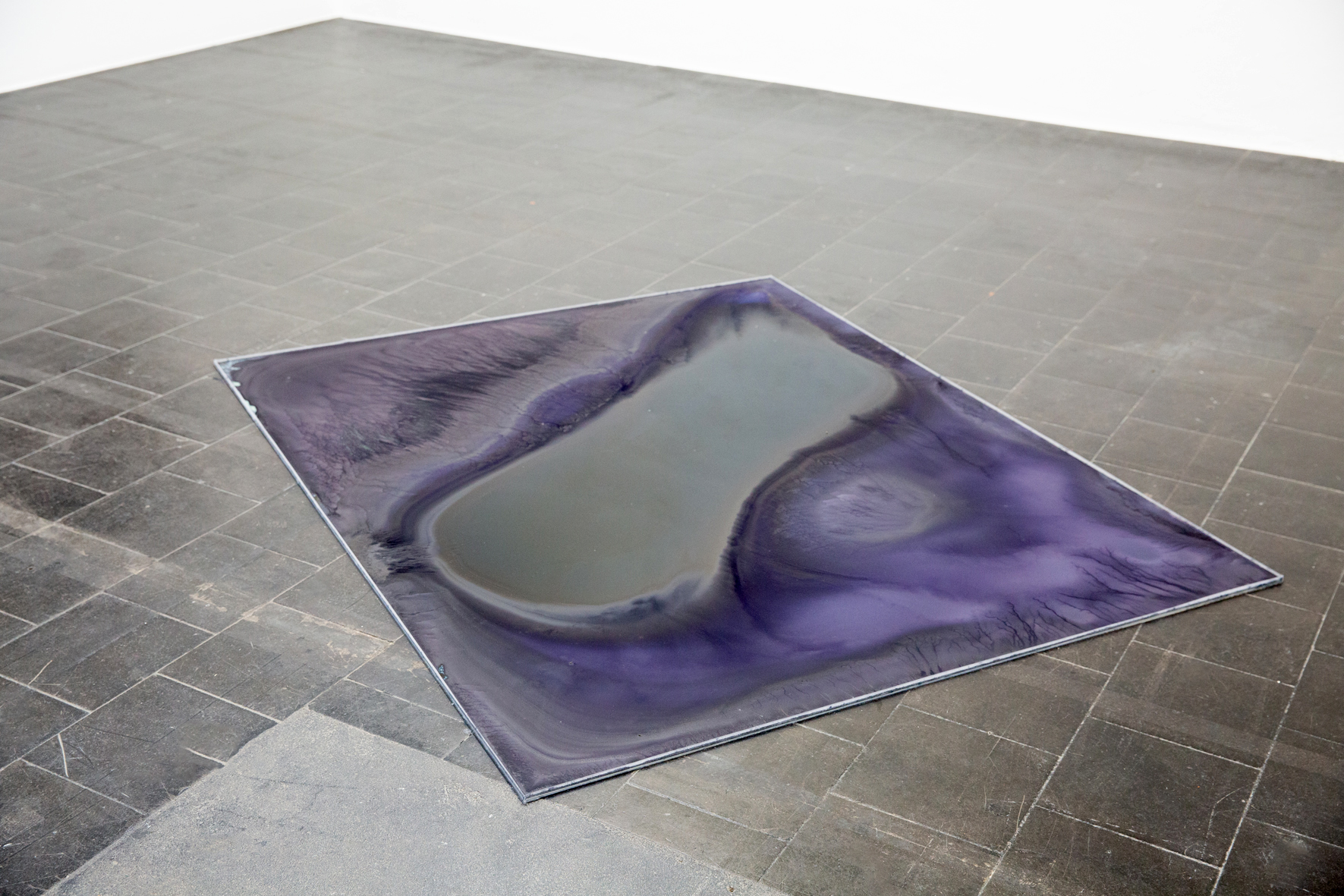
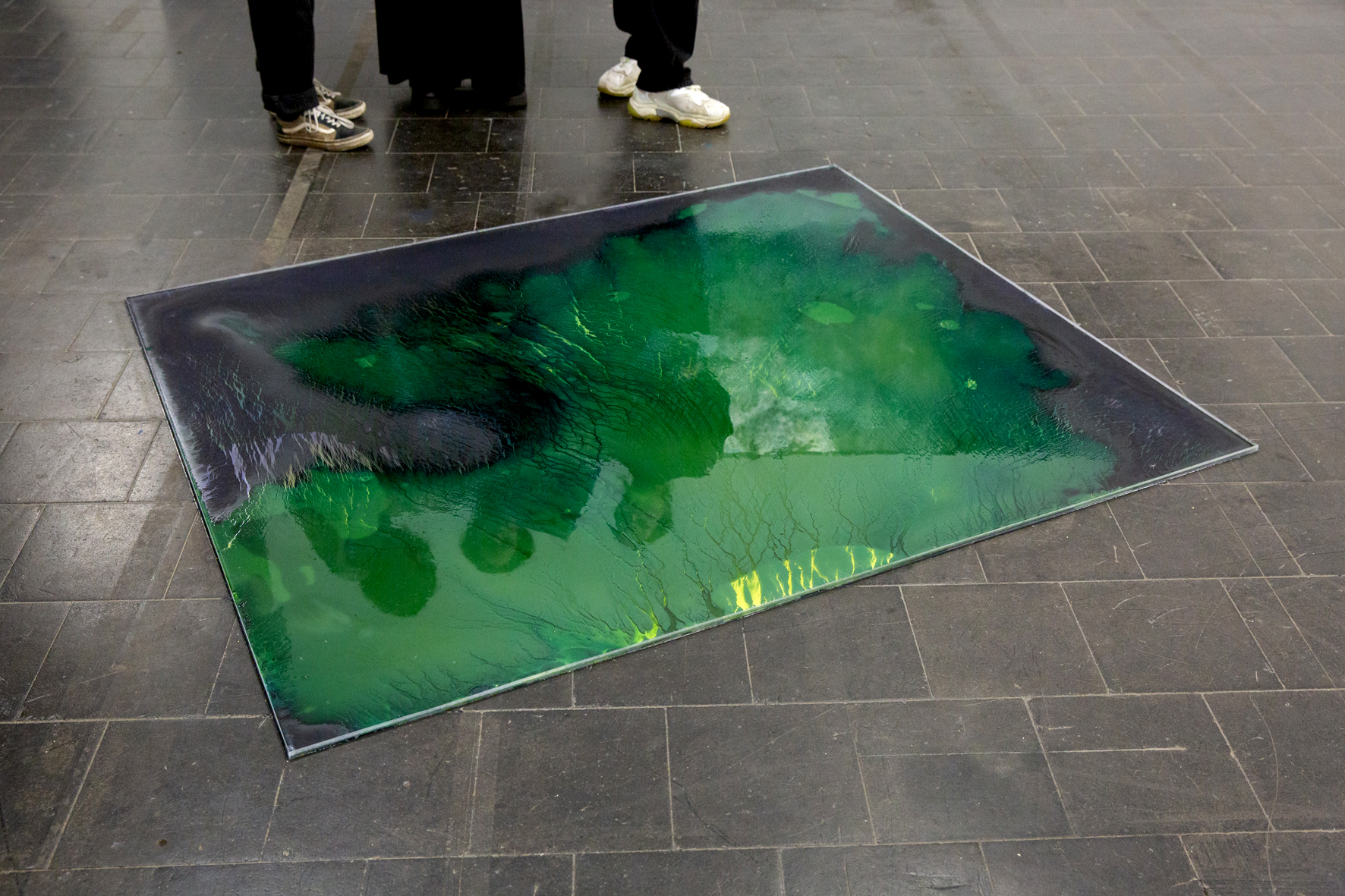
Content:
„Vibrant Waters“ Exhibition curated by Nada Rosa Schroer at the Temporary Gallery, Cologne (Photoscene Co-Labs),2023
At a time when lakes are drying up, rivers are disappearing, and groundwater resources are diminishing due to overuse and climate change, the question of water is of the utmost urgency.
Against this backdrop, the exhibition Vibrant Waters traces the qualities of the element. If we were to pay attention to water, what would it tell us? On view are artistic positions that question the understanding of the element as an abstract raw material and, in doing so, examine the material conditions of imaging practices. What is the relationship of water to the production and circulation of images? How do watery relations become visible in images and how can modes of production and relations be counter-read from a hydrofeminist and decolonial perspective?
From both historical and contemporary perspectives, water is fundamental to image production. It is needed in large quantities for the extraction of metals, precious metals, and rare earths, as well as used in the semiconductor industry and for cooling server farms. Both the extraction of raw materials and the produc-tion of the media supporting images inscribe themselves on waterscapes. What do these landscapes tell us about the power relations and hierarchies within dominant and Western worldviews, in which the conceptual separation of “nature” and
“culture” allows the environment to be exploited as a cheap material?
Water is much more than a raw material that can be reduced to the abstract formula H2O. In many non-Western indigenous cosmologies, the liveliness of all matter is fundamental to understanding interconnectedness. “Water is relation,” is how Anishinabe scholar Deborah Mc Gregor puts it. Water forms living bodies that permeate everything and create the conditions for the all living. The plural of the English word in the title of the exhibition refers to the innumerable forms, composi-tions and cycles in which the wet and liquid manifest themselves on earth and sub-tly connect different bodies – from the microscopic level of a cell to the macro-scopic level of planetary weather phenomena. “As watery,” philosopher Astrida Neimanis describes it, “we experience ourselves less as isolated entities, and more as oceanic eddies: I am a singular, dynamic whorl dissolving in a complex, fluid circulation.”
The Vibrant Waters exhibition explores how water cycles continue through medium, body, environment, and society, and explores how aqueous interdepend-encies are expressed artistically. Many of the positions presented in the exhibition relate to contexts shaped by extractivism, capitalism, and colonialism. They point to water as a shaper of economic, political, and spiritual relationships, as a carrier of information, or as an aesthetic agent that creates images of itself. They docu-ment how communities come together at the waterside in resistance to the loss of their livelihoods, or speculate about posthuman beings watching over toxic waters in the ruins of the Capitalocene.